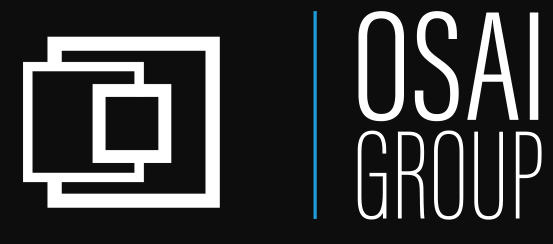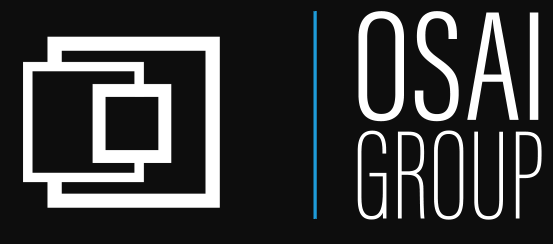REPORTING MISCONDUCTS (WHISTLEBLOWING)
Aware of the importance of the contribution of everyone in protecting the integrity of the company and in ensuring compliance with the principles of legality, fairness and transparency, also towards third parties, in the exercise of the Group’s business activities, OSAI Automation System S.p.A. Società Benefit has taken steps to activate the internal channel for reporting unlawful conduct in accordance with Legislative Decree no. 24/2023, implementing the EU Directive 2019/1937.
OSAI intends herewith to promote the widest dissemination of any useful information on the reporting methods, the prerequisites, and the operating procedures for making reports.
WHO CAN REPORT?
- Employees, fixed-term and open-ended, of OSAI;
- Self-employed workers, including those indicated in Chapter I of Law No. 81 of 22 May 2017, as well as holders of a collaboration relationship referred to in Article 409 of the Code of Civil Procedure and Article 2 of Legislative Decree No. 81 of 2015, who perform their work activity at OSAI;
- Workers and external collaborators, who carry out their work activities at OSAI and who provide goods or services or carry out works in favour of third parties on behalf of OSAI;
- Freelancers and consultants who work for OSAI;
- Volunteers and trainees, paid and unpaid, who work for OSAI;
- Shareholders and people with administrative, management, control, supervisory or representative functions, even if these functions are exercised on a de facto basis, at OSAI;
- Who become aware of unlawful conduct in the work context.
Whistleblowers may also decide to report anonymously, in accordance with the provisions of the Whistleblowing Procedure.
WHAT UNLAWFUL CONDUCT CAN BE REPORTED?
- Administrative, accounting, civil or criminal offences that do not fall under numbers 3), 4), 5) and 6) below;
- Unlawful conduct relevant under Legislative Decree 231/2001 or violations of the organisation and management models provided for in Legislative Decree 231/2001 and which do not fall under numbers 3), 4), 5) and 6). Included herein are failures to comply with the control measures provided for in the model pursuant to Legislative Decree No. 231/2001, as well as violations of the Code of Ethics and of the company procedures that are an applicative expression of the principles contained in the model pursuant to Legislative Decree No. 231/2001, insofar as they are an integral part of it;
- Offences falling within the scope of application of the European Union or national acts indicated in the Annex to the Decree or national acts constituting implementation of the European Union acts indicated in the Annex to Directive (EU) 2019/1937, relating to the following areas: public procurement; financial services, products and markets and prevention of money laundering and financing of terrorism; product safety and compliance; transport safety; environmental protection; radiation protection and nuclear safety; food and feed safety and animal health and welfare; public health; consumer protection; privacy and protection of personal data and security of networks and information systems;
- Acts or omissions affecting the financial interests of the Union as referred to in Article 325 of the Treaty on the Functioning of the European Union specified in relevant secondary Union law.
- Acts or omissions relating to the internal market, as referred to in Article 26(2) of the Treaty on the Functioning of the European Union, including violations of Union competition and State aid rules, violations relating to the internal market linked to acts in breach of corporate tax rules or mechanisms whose purpose is to obtain a tax advantage that frustrates the object or purpose of the applicable corporate tax law
- Acts or conduct that frustrate the object or purpose of the provisions of Union acts in the areas indicated in (3), (4) and (5) above.
Reports must in any case be circumstantiated, specifying:
- the circumstances of time and place in which the event which is the subject of the alert occurred;
- the description of the fact;
- personal details or other elements enabling the reported person(s) to be identified;
Reports may also concern facts that have not yet occurred but which the reporter reasonably believes may occur on the basis of precise and concordant elements.
Gossip, reports based on suppositions, personal opinions or unfounded suspicions, news already in the public domain, as well as personal matters relating to individual work relations and to relations with colleagues and hierarchical superiors are not subject to reporting.
WHAT ARE THE INTERNAL REPORTING MODALITIES?
The report must be made using the following methods alternatively:
in written telematic form, through the “My Governance” software platform (hereinafter “the Platform”), access to which is by linking to the URL: https://areariservata.mygovernance.it/#!/WB/OSAIAUTOMATION.
in written form, by registered letter, to be sent to the following address: OSAI Automation System S.p.A. S.B., Via della Cartiera 4 – 10100 Parella (TO) – To the attention of the Whistleblowing Reporting Manager. If sent by registered mail, the report must be placed in two sealed envelopes: the first containing the identification data of the Whistleblower together with a copy of the identification document; the second with the report (so as to separate the identification data from the report), preferably using the pre-printed report form attached to the Whistleblowing Procedure. to this Procedure. Both must then be placed in a third sealed envelope bearing on the outside the words “Confidential for whistleblowing manager – Whistleblowing report”.
orally, as follows
- by requesting a confidential interview with the Whistleblowing Manager; confidential interviews will be minuted by the Whistleblowing Manager;
- via voice messaging tools using the following telephone number: +39 0125 656888.
HOW IS THE REPORT HANDLED?
The Reporting Manager, in the person of the pro tempore Head of the Legal and Corporate Affairs Function, will receive the report and reply within 7 working days. Then, the Manager will proceed to a preliminary assessment, requesting, where appropriate, integrations and requests for clarifications.
Then, if the report is admissible, the Manager will proceed with the investigation, communicating the outcome within 90 working days, which may be extended, and forwarding the report to the competent bodies in accordance with the rules described in the Whistleblowing Procedure.
HOW IS THE WHISTLEBLOWER PROTECTED?
The whistleblower enjoys the following protections:
- Protection of confidentiality and anonymity, where the report is anonymous;
- Prohibition of retaliation suffered as a result of the report;
- Prohibition of signing waivers and settlements of unprotected claims under Article 2113 of the Civil Code;
- Limitations of criminal, civil and administrative liability;
the conditions better described in the Whistleblowing Procedure.
If you intend to make a report, we invite you to carefully read the Whistleblowing Procedure and the Privacy Policy that can be downloaded in the section on the top right of this page.






